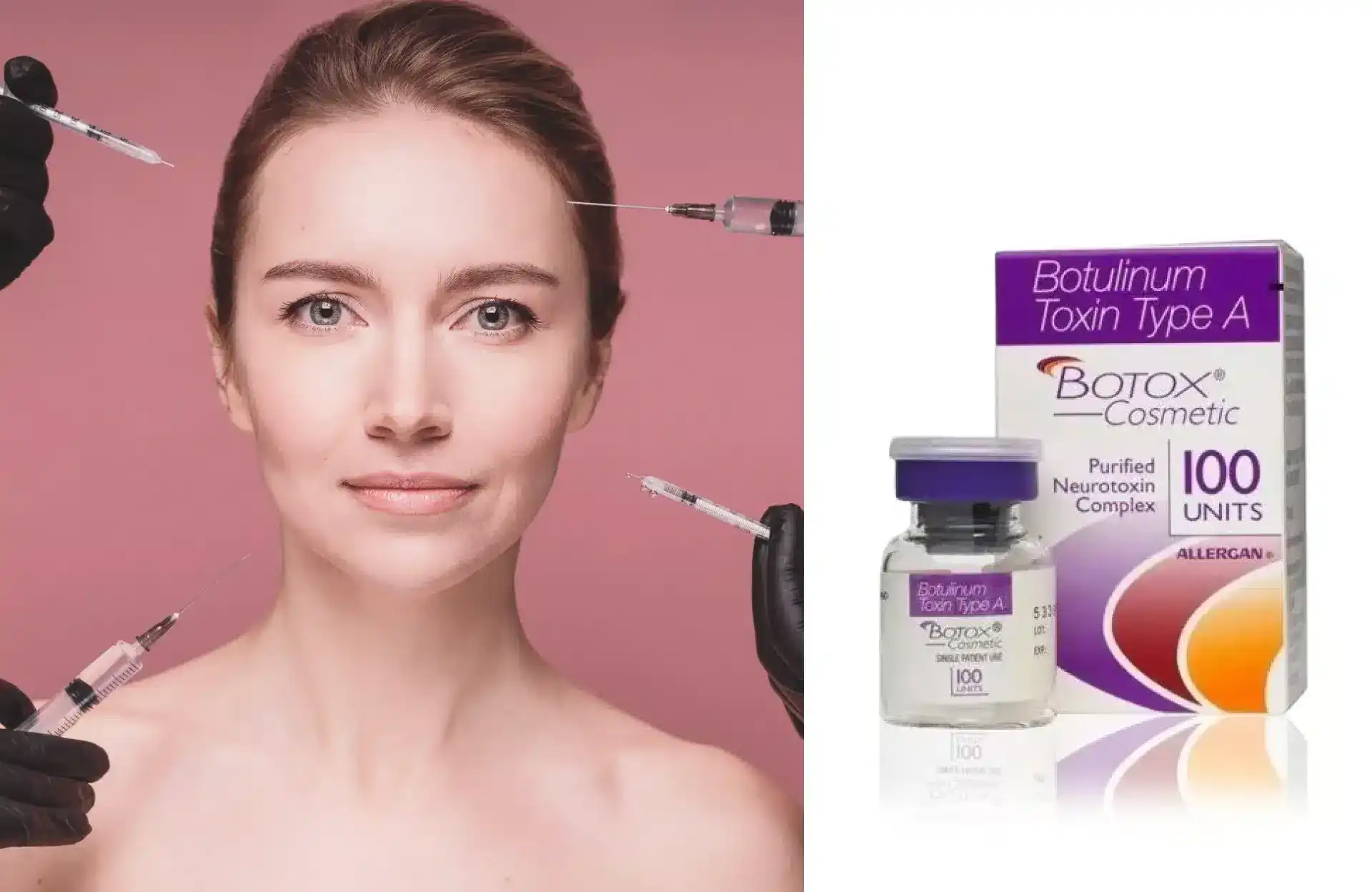Only for Licensed Professionals
Only for Licensed Professionals

Ultrasound Guided Botox Injections: Precision Enhancement in Modern Aesthetic Medicine
Nina Petrovic
Last Updated On: August 27, 2025
Ultrasound guided Botox injections are a paradigm shift in precision aesthetic medicine, providing clinicians with unprecedented precision in the administration of botulinum toxin.
This has been confirmed by recent 2024 studies published in the Journal of Clinical Medicine and proven by extensive clinical trials that this technology is superior to the conventional landmark-based injection methods.
To practitioners, knowledge of these developments is essential to maximize patient outcomes and continue to be competitive in the changing aesthetic marketplace.
Key Takeaways
- Ultrasound guidance significantly improves injection accuracy, enabling precise muscle targeting and reducing complications
- Real-time visualization enables precise muscle targeting, particularly beneficial for masseter and TMJ treatments
- Enhanced safety profile with reduced risk of vascular complications and unwanted muscle involvement
- Improved patient outcomes with more predictable results and decreased need for touch-up treatments
- Cost-effectiveness through reduced product waste and fewer correction sessions
The Evolution of Ultrasound-Guided Injection Techniques
The integration of ultrasound for Botox injections has transformed how practitioners approach facial anatomy visualization and treatment planning. As opposed to traditional palpation-based techniques, ultrasound technology offers dynamic real-time imaging of muscle architecture, vascular structures, and fascial planes. This technological development deals with the natural anatomical differences that occur among patients, which can be important in terms of efficacy and safety profiles of treatment.
The 2024 MDPI study demonstrated that ultrasound-guided single-point injections for lower face contouring provided greater accuracy and reproducibility compared to conventional landmark-based techniques. These findings suggest that ultrasound guidance has the potential to transform standard practice guidelines in aesthetic medicine.
Understanding the Technology: Equipment and Setup
Contemporary facial aesthetic ultrasound systems usually use high-frequency linear transducers (10-15 MHz) with outstanding superficial structure resolution. Botulinum toxin products that are usually applied with the use of ultrasound guidance have certain preparation guidelines that must be followed to achieve the best visualization of the injection.
The ultrasound-guided injection technique for Botox has a number of important components:
- Transducer positioning at perpendicular angles to target muscles
- Doppler mode activation for vascular mapping
- Real-time needle tracking using in-plane or out-of-plane approaches
- Continuous visualization throughout the injection process
Practitioners investing in this technology through professional medical suppliers like Med Supply Solutions report significant improvements in procedural confidence and patient satisfaction scores.
Clinical Applications in Masseter Treatment
One of the most interesting uses of ultrasound guidance has been in the treatment of masseter Botox. The complex three-dimensional structure of the masseter muscle and its close relation to important anatomical structures make accurate placement of the injection of paramount importance.
The 2024 review published in Toxins emphasized that ultrasound-guided masseter injections reduce the risk of complications such as temporary facial asymmetry compared to blind injections.
Understanding how to inject Botox masseter with ultrasound guidance requires an appreciation of the muscle’s distinct compartments. The superficial and deep layers react differently to botulinum toxin, and ultrasound visualization allows for treating specific areas differently according to individual patient anatomy and treatment objectives. This accuracy is especially useful in treating patients with issues of masseter hypertrophy or bruxism.

Optimizing TMJ Disorder Management
Ultrasound guided botulinum toxin injections in temporomandibular joint disorders are a major breakthrough in pain management techniques. TMJ Botox treatments have historically relied on anatomical landmarks that can be misleading in patients with chronic inflammation or structural alterations.
Studies have shown that ultrasound guidance allows practitioners to detect and prevent vital structures like the facial artery and the parotid gland and place the implant correctly in the lateral pterygoid muscle. The US guided Botox injection method of TMJ disorders has proven to have better results in terms of pain reduction and functional improvement scores.
Ultrasound imaging can be used to identify personal differences in muscle thickness and fiber orientation that directly influence treatment planning when deciding where to inject Botox masseter to relieve TMJ. The Botox 100 units that are usually administered in these processes can be better dispersed with the optimization of injection sites by visualizing them with the help of ultrasound.
Neurological Applications and Specialized Techniques
The area of ultrasound guided botulinum toxin injections in neurology has seen tremendous growth with uses in cervical dystonia, spasticity, and many others. Neurologists using ultrasound guidance also indicate better targeting of deep cervical muscles and fewer complications in treating complex movement disorders.
The 2024 study identified some of the neurological uses in which ultrasound guidance was especially useful:
- Cervical dystonia with enhanced accuracy in targeting specific dystonic muscles
- Upper limb spasticity with improved functional outcomes in treated patients
- Hemifacial spasm with reduced diffusion to adjacent muscles
- Migraine prevention with precise targeting of trigger points
These special applications need a high level of knowledge of ultrasound technology and botulinum toxin pharmacology, and therefore, extensive training is necessary for practitioners who want to increase the scope of their services.
Safety Considerations and Complication Prevention
Botox for TMJ and other therapeutic applications carries inherent risks that ultrasound guidance significantly mitigates. Vascular complications, though rare, can have serious consequences. Color Doppler imaging has made the visualization of arterial and venous structures in real-time, eliminating the occurrence of intravascular injection accidents in facilities that use routine ultrasound guidance.
Locating Botox TMJ injection sites with the help of ultrasound also avoids unintentional injection into the salivary glands, lymph nodes, or neural structures. This improved safety profile is especially significant when dealing with patients who have an altered anatomy as a result of prior surgery or trauma.
Economic Implications and Practice Integration
Implementing ultrasound-guided injection protocols requires initial investment in equipment and training, but economic analyses demonstrate rapid return on investment through several mechanisms:
- Reduced product waste through precise dosing and placement results in meaningful cost savings on botulinum toxin products.
- Decreased touch-up treatments save both time and resources while improving patient satisfaction.
- Enhanced reputation and referral rates from superior outcomes drive practice growth.
Medical practices report that integration of ultrasound guidance typically achieves positive financial impact within the first year of implementation, with sustained growth in procedure volume and patient retention rates.

Training and Certification Requirements
Ultrasound-guided injection techniques need systematic training that involves both theoretical and practical training. Professional bodies have now developed special certification programs that include:
- Ultrasound physics and image optimization
- Facial anatomy correlation with sonographic appearance
- Injection techniques specific to ultrasound guidance
- Complication management and troubleshooting
Those practitioners who want to improve their skills may find the resources in professional medical education platforms and special training centers with cadaver-based workshops.
Future Directions and Emerging Technologies
Artificial intelligence and ultrasound technology are converging, which will lead to even greater precision in injections. The machine learning algorithms under development can also determine the best injection points depending on the anatomy of the individual patient, and this may even standardize outcomes among practitioners of different levels of experience.
Augmented reality overlays and three-dimensional ultrasound reconstruction are the new technologies that can potentially transform the administration of botulinum toxin even further. Such developments are expected to be commercially available within 2-3 years, and thus, present investment in ultrasound infrastructure at present is a strategic investment in future capabilities.
Conclusion
Ultrasound-guided botulinum toxin injection is a paradigm shift in aesthetic and therapeutic medicine. The strong data of 2024 research studies, along with the experience of practical clinical practice, prove the obvious advantage over the conventional injection methods.
To practitioners who believe in providing quality care to patients, the incorporation of ultrasound technology is no longer just beneficial but a necessity in ensuring competitive positioning in the dynamic medical aesthetic environment.
The use of ultrasound-guided injection methods will probably become standard of care in all uses of botulinum toxin therapy as the technology further develops and training is made more available. Doctors who adopt this technology are currently at the forefront of precision aesthetic medicine.
Frequently Asked Questions
How much does ultrasound equipment for Botox injections typically cost?
Facial aesthetic ultrasound systems can cost between $15,000 to $45,000, depending on the features and portability. Leasing or certified pre-owned equipment is a cost-effective way to enter the ultrasound-guided injection practice, which many practitioners find. The investment is usually self-paying in 6-12 months with better efficiency and patient outcomes.
Is ultrasound guidance necessary for all Botox injections?
Although not always required in all procedures, ultrasound guidance has a major benefit in complex areas of the anatomy, for patients who have undergone prior treatment or surgery, and treatment procedures such as TMJ disorders or cervical dystonia. Forehead or crow’s feet procedures are simple, and ultrasound may not be needed, but masseter and deeper muscle injections are enhanced significantly by ultrasound visualization.
What is the learning curve for ultrasound-guided Botox injections?
The majority of experienced injectors reach a basic level of competence following a structured course and supervised practice over a period of weeks. Proper mastery is normally acquired after a few months of regular practice. The initial learning cost is compensated by better results, fewer complications, and patient satisfaction that has a direct influence on practice growth and reputation.
Can ultrasound guidance reduce the amount of Botox needed per treatment?
Research shows that accurate positioning with the help of ultrasound can maximize dose efficiency with no or better clinical outcomes. This economy is due to the correct targeting of motor points and optimum distribution in the target muscles, and there is no waste of product through incorrect placement and fewer touch-up treatments.
Are there any contraindications to using ultrasound for Botox guidance?
There are no particular contraindications to ultrasound guidance other than those that already exist for botulinum toxin treatment itself. The non-invasive imaging is safe in all patients, including those with pacemakers or metal implants, and is therefore universally applicable to increase injection precision.
References
- Ryoo HJ, Kwon H, Choi JS, et al. Prospective analysis of the effectiveness of targeted botulinum toxin type A injection using an ultrasound-guided single-point injection technique for lower face contouring. J Clin Med. 2024;13(17):5337. doi:10.3390/jcm13175337
- Popescu MN, Beiu C, Iliescu CA, et al. Ultrasound-guided botulinum toxin-A injections into the masseter muscle for both medical and aesthetic purposes. Toxins (Basel). 2024;16(10):413. doi:10.3390/toxins16100413
- Carda S. A practical booklet for ultrasound-guided botulinum toxin injections. Clin Neurophysiol Pract. 2025;41:1-12. doi:10.1016/j.clinph.2025.01.013
- Popescu MN, Beiu C, Iliescu CA, et al. Ultrasound-guided botulinum toxin-A injections in neurology: current evidence and future directions. Toxins (Basel). 2025;17(3):174. doi:10.3390/toxins17030174
- Barbero P, Busso M, Artusi CA, et al. Ultrasound-guided botulinum toxin-A injections: a method of treating sialorrhea. J Vis Exp. 2016;(117):54606. doi:10.3791/54606
Products
Cart
Log In
Newsletter
Subscribe for exclusive offers and updates on new arrivals
Share feedback at:
Working Hours
MON - SUN 9AM to 6PM EST
The Most Popular Brands
Med Supply Solutions
Support
Secure checkout is guaranteed with full adherence to PCI DSS payment standards.
Products listed here are guaranteed authentic and manufacturer-sourced.
Pay easily with trusted providers


*Google and Apple Pay are currently only available via a direct link provided by your account manager.
Copyright 2025. Med Supply Solutions